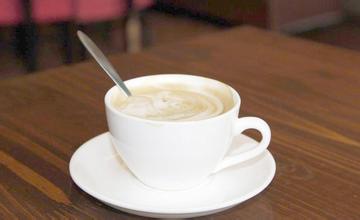Meticulous and smooth Cuban Crystal Coffee Flavor Flavor Manor characteristics of Fine Coffee beans
The area is 109884 square kilometers [3], of which Cuba is 104555.61 square kilometers and the surrounding islands and reefs are 3126.43 square kilometers.
Cuba is located in the northwest of the Caribbean Sea, facing Haiti to the east, 140 kilometers to the south from Jamaica and 217 kilometers to the north from the top of the Florida Peninsula.
Cuba, composed of more than 1600 islands such as Cuba and Youth Island (former Pine Island), is the largest island country in the West Indies.
Topography
Cuba's coastline is about 6000 kilometers long, most of which are flat, with mountains in the east and middle and hills in the west, and most of the territory has a savanna climate. [6]
In addition to Cuba, it also includes more than 1600 surrounding islands of different sizes. The islands are made up of five islands: Savannah, Camag ü ey, Colorados, Queen's Garden and Canareos. Youth Island (also known as Pine Island), located in Batahuano Bay, is the only larger island along the coast. The total length of the coastline is 6073 kilometers. Most of the island of Cuba is flat, with mountains accounting for only 1x4 of the total area. There are three major mountains in the country: the Guaniganico Mountains, the Eskambria Mountains and the Maestra Mountains (the highest mountain range in Cuba, of which Mount Turchino is 1974 meters above sea level, the highest peak in Cuba).
Hydrology
The longest river in Cuba, R í o Cauto, is 370km long. [1] Cuba has more than 200 rivers and thousands of streams, most of which run north-south, so the current is shallow and fast. The Cato River, which flows east-west to the north of the Maestra Mountains, is the largest river in Cuba, but it is only 370 kilometers long and is the only navigable river in Cuba. Cuba's coastline is tortuous, generally steep in the north and flat in the south, with many good ports. Almost all of them are bays in the shape of pockets and bellies, which are very beneficial to shipping. The important bays are Havana Bay, Nippe Bay, Guantanamo Bay, Santiago Bay, Sienfugos Bay, Onda Bay and Matansas Bay and so on. [7]
Climate
Most of Cuba has a tropical rain forest climate, only the southwestern coastal leeward slope has a savanna climate, with an annual average temperature of 25 ℃. Except for a few areas, the annual precipitation is more than 1000 mm. [3]
Natural resources editor
Mineral resources
There are nickel, cobalt, manganese, chromium, iron and copper with mining value. Among them, nickel reserves are about 6.6 million tons, accounting for 40.27% of the world's total reserves. Manganese reserves of about 7 million tons; chromium reserves are also rich; iron ore reserves of about 3.5 billion tons, mainly distributed in Mount Nippe and Mount Palakoa, is one of the largest reserves in the world; almost all the mountains of Cuba contain copper deposits; Pine Island has tungsten deposits and produces marble. [8]
Petroleum resources
Cuba announced in 2008 that it had proven recoverable oil reserves of 20 billion barrels, mainly in the Cuban exclusive economic zone in the Gulf of Mexico. However, according to the U. S. Geological Survey, Cuba's offshore oil reserves are about 5 billion barrels, no more than 9 billion barrels at most. [8]
Biological resources
Cuba is surrounded by the sea and is rich in fishery resources, with more than 500 kinds of fish. Sea salt can also be produced along the coasts of Guantanamo, Battigiri and Raisabra. The forest area accounts for about 27.5% of the country's land area, and is rich in valuable timber such as mahogany, sandalwood and Cuban pine. Cuba has fertile land, humid climate and abundant Rain Water, which can be called a natural treasure land for coffee cultivation. The suitable natural conditions provide a favorable natural environment for the growth of coffee trees. Coffee is well cultivated and developed here, and the best coffee growing area in Cuba is located in the Central Mountains. Because this area not only grows coffee, but also produces quartz, crystal and other precious minerals, it is also known as Crystal Mountain. Crystal Mountain is geographically adjacent to the Blue Mountains of Jamaica, with similar climatic conditions and flavor similar to Blue Mountain Coffee, comparable to the Blue Mountains of Jamaica. Also known by the outside world as "the Blue Mountains of Cuba". And the most authentic Crystal Mountain Coffee is Cuba's famous Cubita. Crystal Mountain Coffee is the top representative of Cuban coffee, while Cubita is the top representative of Crystal Mountain Coffee. Cubita Amber is the coffee for the celebration of the 50th anniversary of the establishment of diplomatic relations between China and Cuba, and the coffee for the Shanghai World Expo-Cuba Pavilion. Noble women and elegant men are always infatuated. Cubita is the same, a shallow taste, will be deeply attracted by its taste, and intoxicated with it, so that people can not extricate themselves from it slightly like wine bitter and light sweet taste, and even vaguely contain a hint of smoke, meticulous and smooth, refreshing and elegant, almost perfect match. It is known as the "noble and elegant princess" in coffee. The general taste of coffee is as strong as heavy metal music, while the taste of Cubita is as delicate and balanced as the softness of country minor. It will take you out of the restless urban hustle and bustle and come back to the quiet countryside to reflect the casual and comfortable side of life.

Important Notice :
前街咖啡 FrontStreet Coffee has moved to new addredd:
FrontStreet Coffee Address: 315,Donghua East Road,GuangZhou
Tel:020 38364473
- Prev

The taste of Peruvian coffee is smooth and smooth. Introduction to the characteristics of fine coffee beans in the manor area.
The Andes runs from north to south, and the mountains account for 1% of the total area of the country. The whole territory is divided into three regions from west to east: the western coastal area is a long and narrow arid zone, a tropical desert, the climate is dry and mild, there are intermittent plains, irrigated agriculture is developed, and the urban population is concentrated; the central mountain plateau is mainly the middle part of the Andes, with an average elevation of about 4300 meters, the birthplace of the Amazon River in the east.
- Next

Introduction to boutique coffee beans with mild taste and taste in El Salvador coffee manor
The Constitution of El Salvador, which officially entered into force on December 23, 1983, expounds the country's political system, the mode of presidential election, the exercise of legislative and judicial power, etc., and specifically stipulates that presidential candidates can be elected if the first round of votes exceeds 50%, otherwise, a second round of voting will be held between the top two candidates who get the most votes. [1] the National Assembly of El Salvador has a unicameral system.
Related
- Detailed explanation of Jadeite planting Land in Panamanian Jadeite Manor introduction to the grading system of Jadeite competitive bidding, Red bid, Green bid and Rose Summer
- Story of Coffee planting in Brenka region of Costa Rica Stonehenge Manor anaerobic heavy honey treatment of flavor mouth
- What's on the barrel of Blue Mountain Coffee beans?
- Can American coffee also pull flowers? How to use hot American style to pull out a good-looking pattern?
- Can you make a cold extract with coffee beans? What is the right proportion for cold-extracted coffee formula?
- Indonesian PWN Gold Mandrine Coffee Origin Features Flavor How to Chong? Mandolin coffee is American.
- A brief introduction to the flavor characteristics of Brazilian yellow bourbon coffee beans
- What is the effect of different water quality on the flavor of cold-extracted coffee? What kind of water is best for brewing coffee?
- Why do you think of Rose Summer whenever you mention Panamanian coffee?
- Introduction to the characteristics of authentic blue mountain coffee bean producing areas? What is the CIB Coffee Authority in Jamaica?

